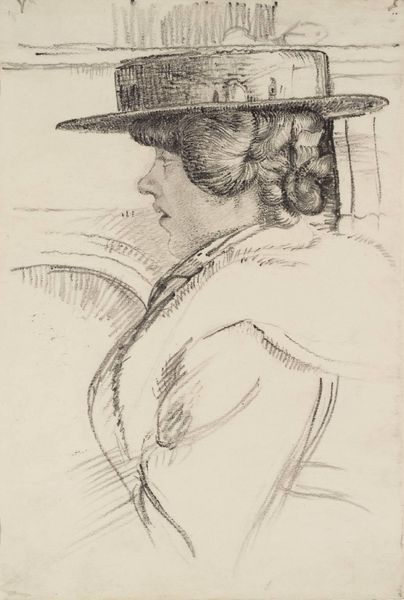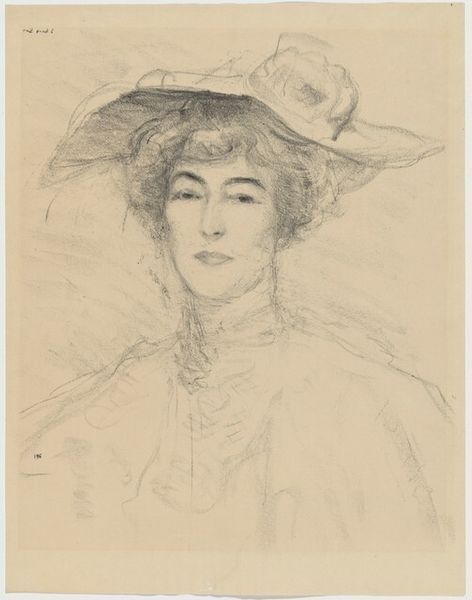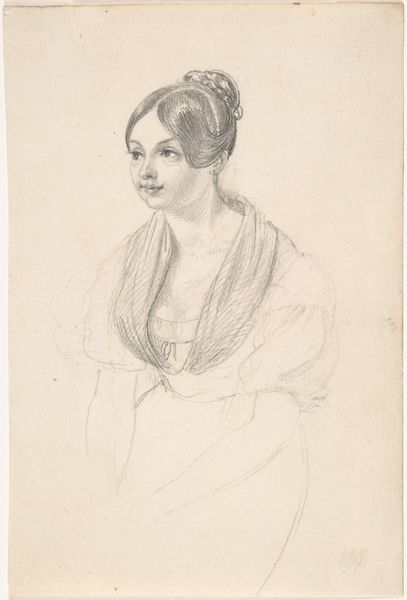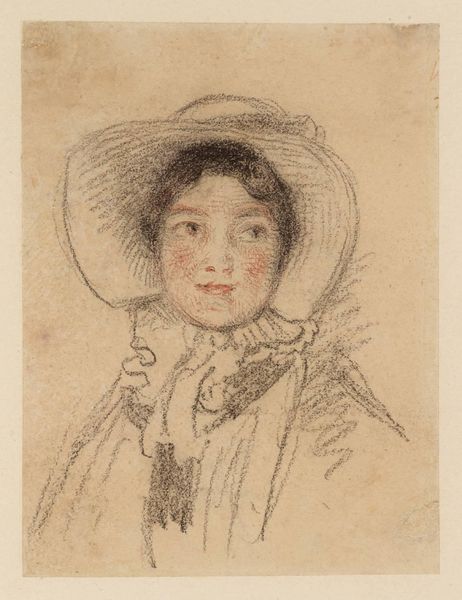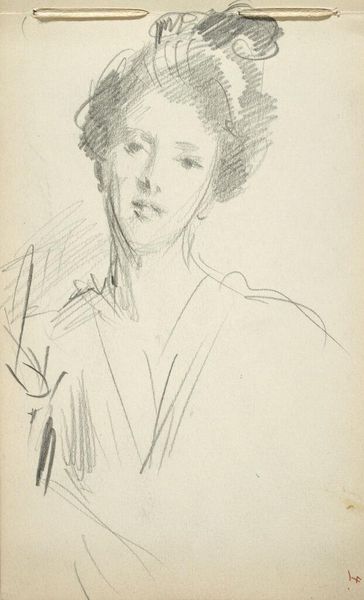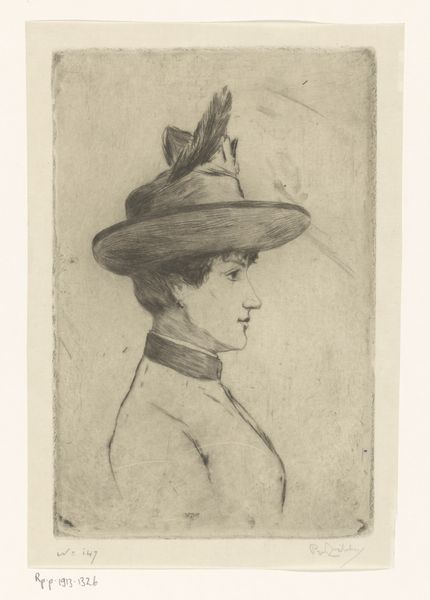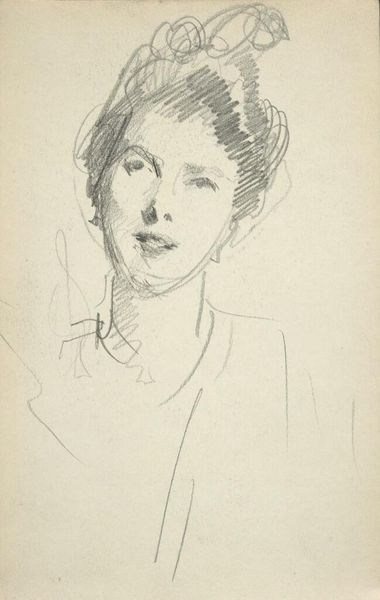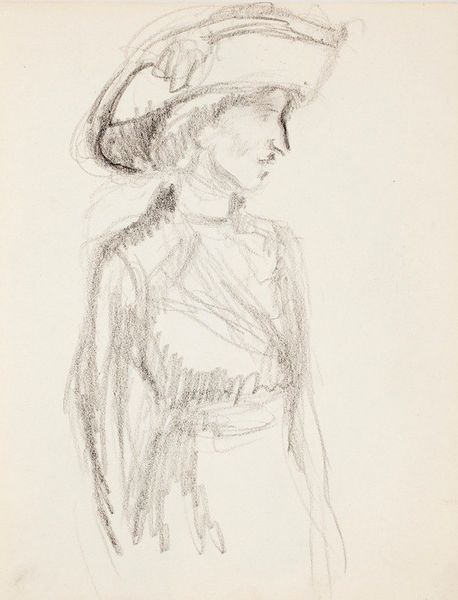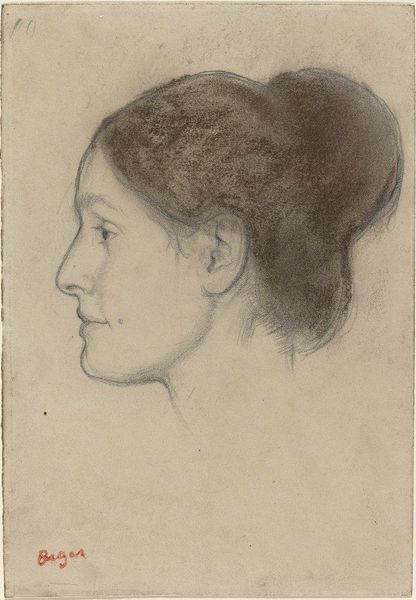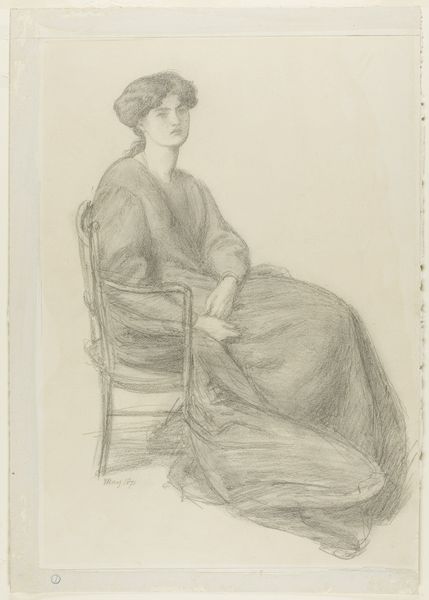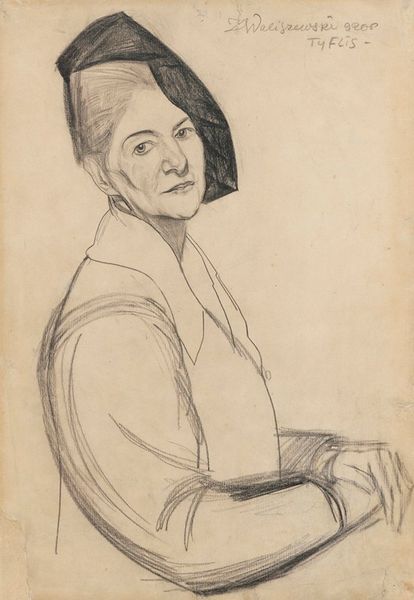
Portret van een dame met brede hoed met veren, van voren gezien 1869 - 1923
0:00
0:00
Dimensions: height 615 mm, width 472 mm
Copyright: Rijks Museum: Open Domain
Curator: Here we have Thèophile Alexandre Steinlen's "Portret van een dame met brede hoed met veren, van voren gezien," or, "Portrait of a Lady with a Wide Feathered Hat, Seen from the Front." It's thought to have been made sometime between 1869 and 1923. Editor: My initial impression is that it’s both intimate and aloof. There's something in her eyes that seems very present, but the broad strokes and the massive hat give her a sense of remove. Curator: It's fascinating how Steinlen uses just pencil to capture so much of her presence. During the late 19th century, images like these were tied to the burgeoning fashion industry, particularly through print media like journals and catalogues, revealing new connections between art, consumerism, and bourgeois identity. Editor: Absolutely. And you see it in the materiality as well. Pencils allowed for a level of mass production of imagery, but also a striking softness. Look at the rendering of the feathers; it gives the work a delicacy that ink or paint might not. This era marks a democratization of the art experience through affordable reproducible means. Curator: I agree completely. The choice of such a simple medium contributes to the feeling of directness we see in much of Steinlen's oeuvre. Remember, he often used his art for social commentary, critiquing the disparities he observed in Parisian society. This drawing, in its understated elegance, prompts reflection on the values of that society. Editor: It’s the texture that I keep coming back to. You can practically feel the grain of the paper, the soft graphite—traces of labor really—and the weight of those feathers. I mean, those feathers had a cost. There is a whole structure behind the making of such "simple" work. Curator: Yes, and viewing it through a contemporary lens makes you think about ethical consumption. Where do such fashion items come from? And what sacrifices are being made to facilitate the look, both for the sitter, but also the consumers seeing these reproduced works in periodicals? Editor: Well, it's those sorts of contradictions that makes it such a compelling image! The softness of the material meets the social implications. Curator: Precisely, it's that duality that resonates, even now. Thank you for bringing it all into focus! Editor: Thank you; now I'm seeing hats differently!
Comments
No comments
Be the first to comment and join the conversation on the ultimate creative platform.
